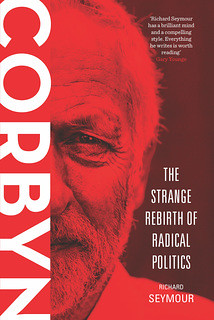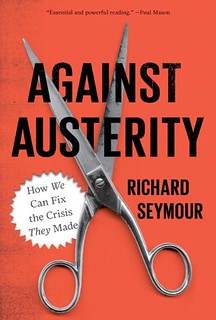Thursday, March 08, 2007
Restraint, provocation, racism and the usual suspects. posted by Richard Seymour
Should the beating of a nineteen year old woman be compared to the beating of Rodney King? Do the police have just cause in punching her five times and booting her in the name of restraint? Was her 'provocation' sufficient to license such a beating? Why are the 'usual suspects' so mean about the police? Merely some of the inane questions floating around the blogosphere and the media, including the nadir of daytime inanity, Channel Five's The Wright Stuff.Those with a slightly longer memory than the average goldfish are quite familiar with the rapid and intensive efforts that the police put into disseminating disinformation, vilification and spurious defenses when called on some apparently obscene bout of violence. When Menezes was shot, we had lie after lie after lie. We had every conceivable kind of preposterous excuse, including the claim that one must always Destroy The Brain Instantly Utterly if one suspects a suicide attack is afoot. When the Koyair brothers were arrested in Forest Gate with one shot and hospitalised, we heard first that they were sure to be guilty of this and that, that there was solid intelligence behind the bust. Then we had repeated phoney disclosures leaked to the News of the World indicating that the suspect was shot by his own brother, and that they had a shitload of money saved up to go on holiday and that the parents were still hoping to go. And then we had the paedophilia claims, which have been quietly dropped. Toni Comer has not yet been accused of that, but perhaps we will be told that she has a relative in Hizb ut-Tahrir, or something. The police's apologists are working intensively to counter the revulsion that they obviously expect. Commentators on the news, including John O'Connor, former commander of the Met's Flying Squad, have insisted that it was 'reasonable' violence, even if it looked bad. Nothing surprising there: when Menezes was shot, the Met's friends were insisting even when revelations undermined the police's story that there must have been some reason why he was shot and that Menezes couldn't have been an innocent man. This often involves special pleading: as in, you can't possibly know what it's like to have to make that split second decision, therefore you can't comment - an excellent way to shut down analysis and legitimate criticism.
Then there is this invidious use of the phrase 'usual suspects', a standard recourse in the attempt by reactionaries to discipline public discussion on some issue. The phrase 'usual suspects' is an interesting discursive device: anyone who expresses the views associated with such a group is automatically marginal, part of a minority of suspect individuals. In this case, it refers to black activists, victims of police violence, lefties, liberals, civil libertarians, bruschetta brigadiers, and anyone who might distrust the police. The insistence that revulsion and serious questions of misconduct are emanating solely or mainly from the 'usual suspects' is a sorely over-used and over-stretched prophylactic. There have been enough police beatings caught on CCTV or mobile phone footage to make the most apolitical individual marvel at the consistency with which coppers like to dish out brutal force. There have been enough fatal shootings of innocent men, and enough deaths in police custody - disproportionately of black men - to create the necessary scepticism. It is entirely reasonable to think through the implications of this and refer to a well-known track record: to refuse to even acknowledge that record, to immediately discount the possibility of unwarranted aggression and the added possibility of racial motivation, is to bias oneself on behalf of the police. And it is noticeable that none of those who have referenced 'the usual suspects' are bothered by the police's apologists making their own strident assessments before they have seen all the evidence, and nor do they appear to withhold from it themselves.
So, to the specifics of this case: 19-year old Toni Comer is an epileptic and mother of one. When arrested, she had been drunk and damaged someone's car. She had resisted arrest, or so it seems, and was bundled to the floor. One officer is seen in the video footage wrestling with the woman on the floor, before several others arrive and help pin her limbs down. He punches her repeatedly and then she is booted. She is then trailed away, with her hands cuffed and her trousers falling around her ankles. It is hard to conceive of a situation in which it is necessary to punch a woman who is on the floor with several policemen pinning her down. It is even harder to see the necessity for booting her while standing over her. The officer claims he simply wanted to handcuff her, and to do so he had to punch her several times including a final punch to the arm to deaden it (it is unclear exactly where the other punches were directed). However, with four policemen restraining her, one would think that all her limbs were covered. Further, one wonders what restraining properties a sharp policeman's boot has? Did he feel threatened as he stood above her and levelled a steel toecap at her body? Even if that was all that was involved, it looks extremely unlikely that one is actually compelled to punch someone and boot them simply to restrain them. This isn't a court room, and I am unwilling to suspend my disbelief: I think the very idea that to handcuff someone as they are pinned to the ground you have to batter them, is preposterous. The woman is 5'6", and 9 stone, and she was pinned down by at least four men who we know for a fact were strong, trained in combat techniques, trained in restraining techniques. The idea that she had to be beaten up in this fashion is an extremely tall story.
When you add the possibility that she was experiencing an epileptic fit - something the officer in question gave credence to by stating that she did in fact have foam at her lips - then we have a more sinister dimension. It points to either dangerous ignorance or callousness.
To explain further: someone suffering an epileptic fit will jerk around as their muscles contract like crazy. They will cease breathing, possibly for several minutes, and spit will gather at the corners of their mouths. During the siezure, they actually stand a chance of losing their lives. They are at risk of asphyxiating themselves one way or the other. They will tend to collide with the floor and anything that happens to be nearby, including sharp edges or objects. They can be injured rather badly if someone tries to mangle them. Medics will almost always tell you that the correct course of action in the case of an epileptic fit is not to punch and kick the person until they stop moving, as was the attempt here. That is bad practise. The correct course of action is to keep them away from sharp things, cushion their head if possible, and when the siezure is finished roll them carefully onto their side in the recovery position. It demands a clinical response, not severe physical violence. If the police officer saw foam gathering at the woman's mouth, then either he lacked the training to know what it signified, or he was too busy angrily knocking her about to care. Either way, he could have killed her. I'll take a wild guess and say that you probably won't hear that on the BBC.
One last thing: this officer has been relieved of duty today as the footage is investigated. What happened until now? Presumably he did not tell his superiors what he had done, and presumably neither did his colleagues, otherwise there would not be the shock that we are now hearing from the 'force'. Why not? Is it because he didn't think it mattered, that it was par for the course? Or is it because it mattered too much?










